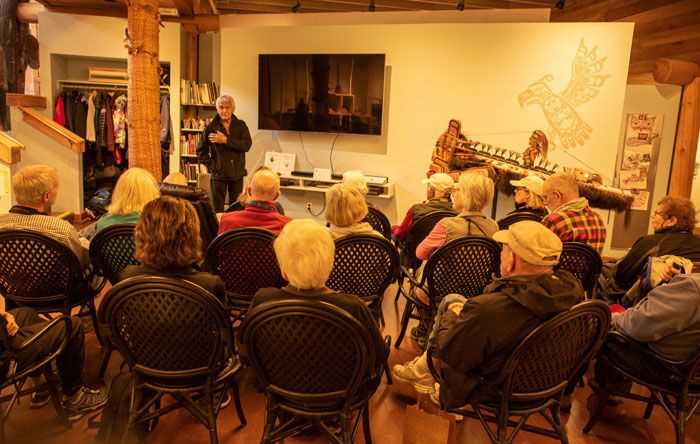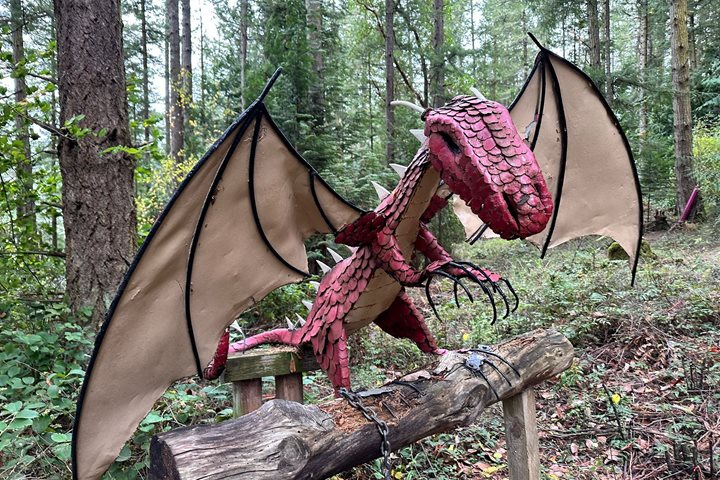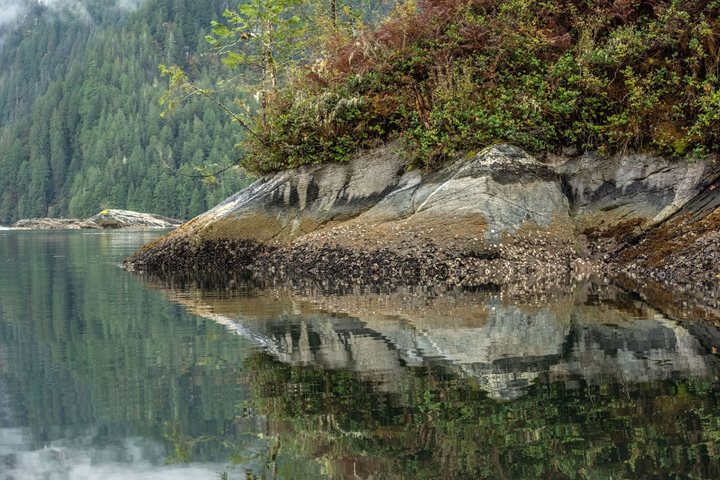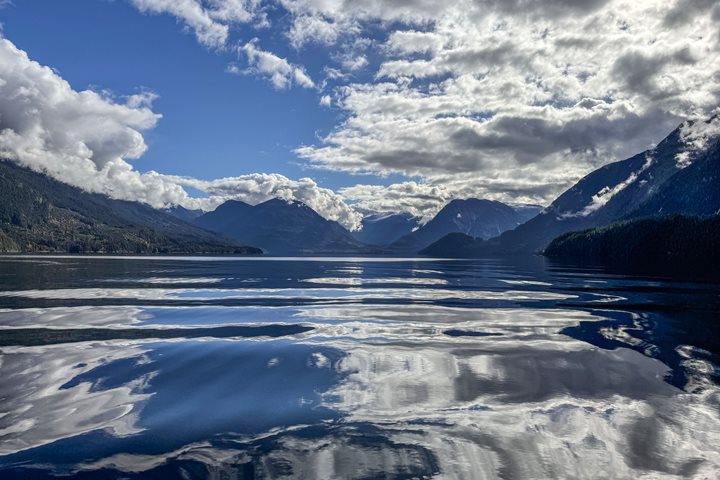Early this morning National Geographic Venture arrived at the Government Dock on Cormorant Island in the community of Alert Bay. It was extremely calm, not a breath of wind and high clouds moving in slowly from the north. After the gangway was lowered and secured, everyone onboard made their way down the dock and walked a short distance to the Namgis traditional burial grounds. We were greeted by Trevor Issac from the U’mista Cultural Center. The ‘Namgis original burial grounds is more than one hundred years in age and is the ancestral burial grounds that have been located on Cormorant Island for many generations. Trevor presented much information about totem pole commemorating deceased members of the Kwakwaka’wakw Nation. Figures on the poles depict family crests and these were the bulk of the questions many of us had for Trevor. He went into much detail about the origin of crests and how families trace their ancestry through those crests.
From the burial grounds, we could either walk the one mile to the U’mista Cultural Center or take one of two small vans to the center. The U’mista Cultural Center was established in the early 1980s. It houses an exceptional collection of traditional and ceremonial masks and artifacts all vital regalia for the Potlatch. This system of governance and ceremony has been the central foundation of the cultural lives for the people of the Northwest Coast for thousands of years. After seeing the Potlatch collection, we saw a short film about the continuum of potlatching. Afterwards we were introduced to Chief Bill Cranmer who leads the Board of Directors for the U’mista Cultural Center. Born and raised in Alert Bay he has spent nearly all of his eighty years involved in many central issues of the lives of his people. He has spent much of his life fighting for the retention of Indigenous languages throughout British Columbia. A quiet man but fiercely observant he stepped forward and gave just a glimpse into the life and value of elders in the world of Indigenous peoples. Bill answered many questions, opening our eyes to the current issues faced by Indigenous peoples up and down the Northwest Coast.
After spending some time looking at many of the exhibits and visiting the gift shop where many local artists bring their work we gathered once again in the lobby of the U’mista Cultural Center and began making our way a short distance to the Big House of Alert Bay. Just last night the Big House had been filled with hundreds of people finishing a two-day potlatch. The fire had been relit, the benches swept and the sand/dirt floor had been raked and made ready for our time for Cultural Sharing. Eli Cranmer, Bill Cranmer’s son came forward, welcomed us, and explained some of what we would be seeing for the next hour. He is well known within the Big House culture as an extremely valued drummer and singer with knowledge of over 200 Potlatch songs! As Eli sat down at the drum log the other worldly nature of being inside the Big House took hold on everyone. A welcome dance brought many members of the T’sasala Cultural Group onto the floor. From elders to the youngest female member, their robes swaying, and the buttons and ornaments on the robes glowed in the fire light of the central fire. We were treated too many dances performed during a full potlatch all abbreviated to our time constraints. The customary fun dance was enjoyed by all at the end of the Cultural Sharing and then we were introduced to the entire T’sasala Cultural Group. One of the drummers stood at the beginning of the song and invited any men in our audience to join the drummers at the log for the fun dance. Because National Geographic Venture’s visit was the last for the season in Alert Bay, a group of our officers attended in full uniform and presented gifts and a lovely thank you for another wonderful season of visits to Alert Bay.
We were then feasted as is customary during a Potlatch and Cultural Sharing! Five long tables were set up in front of the drum log. As we lined up for the buffet, we saw the bounty of this land being presented, only affirming the basis of resources that have created the foundations of a strong and rich culture throughout the Northwest Coast. Wild salmon in three different dishes, clam fritters, deep-fried halibut, eulachon or candle fish battered and fried, steamed prawns, steamed fresh crab, banoc or fry bread with homemade jams, steamed rice and three different salads! What a feast, as is the tradition in the Big House.
All too soon, it was time to return to our waiting ship and continue our voyage. We were at the most northern point of our travels and we would now return south exploring other areas along the way. Community members had informed us that a big storm was coming towards us from the north and as National Geographic Venture released her lines from the Government Dock, everyone noticed the wind was building. Our bridge officers docked the ship into the slightly protected waters of Black Fish Sound. There we found several humpback whales lunge feeding on pockets of prey fish that were close to the surface of the sea, due to deeply grey skies….it was truly a grey on grey day with shades of dark green as we slowly returned to our journey south through the waters of the Pacific Northwest Coast.







